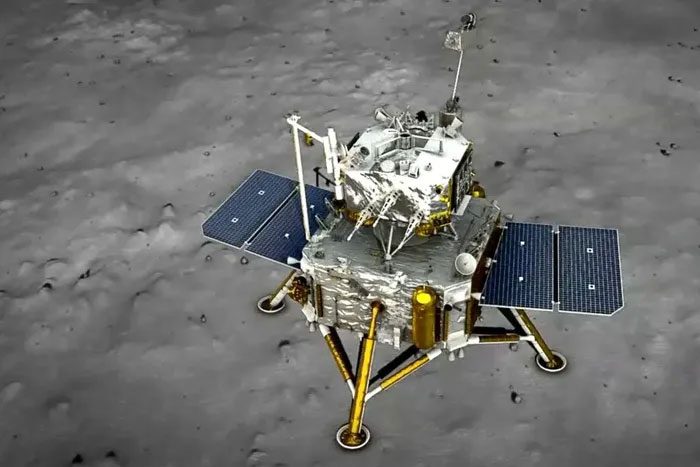China is planning to conduct 100 launches to place over 300 spacecraft into orbit in 2024 – setting a new record and significantly increasing from last year.
Among these, approximately 70 launches will be carried out by the China Academy of Launch Vehicle Technology (CALT). The remaining 30 launches are expected to be commercial rocket projects.
If this plan is realized, the number of launches by China this year will increase by nearly 50% compared to last year. In 2023, China conducted a total of 67 launches.
However, the ratio of launches conducted by CALT compared to private companies remains unchanged, despite the rapid expansion of the commercial space industry in the country.

The Chang’e 6 lunar mission is one of the 100 planned launches by China this year. (Photo: CCTV).
Among these missions, the newly developed Long March 6C, Long March 12, Tianlong-3, and Zhineng-1 rockets will perform their inaugural flights. China’s Tiangong space station has entered its normal operational phase, with plans for 2 cargo missions, 2 crewed missions, and 2 return missions to Earth in 2024.
The first commercial space launch site is also expected to conduct its first launch mission in 2024, aiding in the accelerated construction and connectivity of multiple satellite constellations.
The Phase 4 lunar exploration mission will also witness new advancements, including the launch of the Tiankiao-2 relay satellite and the Chang’e 6 mission, which aims to collect samples from the Moon’s south pole and return them to Earth for the first time in history.
Mr. Jonathan McDowell, a Harvard astronomer and expert in tracking rocket launches and space activities, expressed that he is most looking forward to China’s Chang’e 6 mission this year.
The Chang’e 6 mission is scheduled for launch in May to collect rock samples from the Moon’s far side (the side not visible from Earth). Mr. McDowell added that no country, including the United States, has been able to bring back rocks from the far side of the Moon, and landing on this side is significantly more challenging than on the near side.
McDowell noted that a significant difference between China and the U.S. is that government rockets still play a major role in China’s launches, whereas this is no longer the case in the U.S. In 2024, the Texas-based company SpaceX alone aims for 144 orbital missions.
Another distinguishing factor is the reusability of rockets, particularly the use of multiple first stages of SpaceX’s Falcon 9 rockets, “which China has yet to achieve,” McDowell stated.




















































